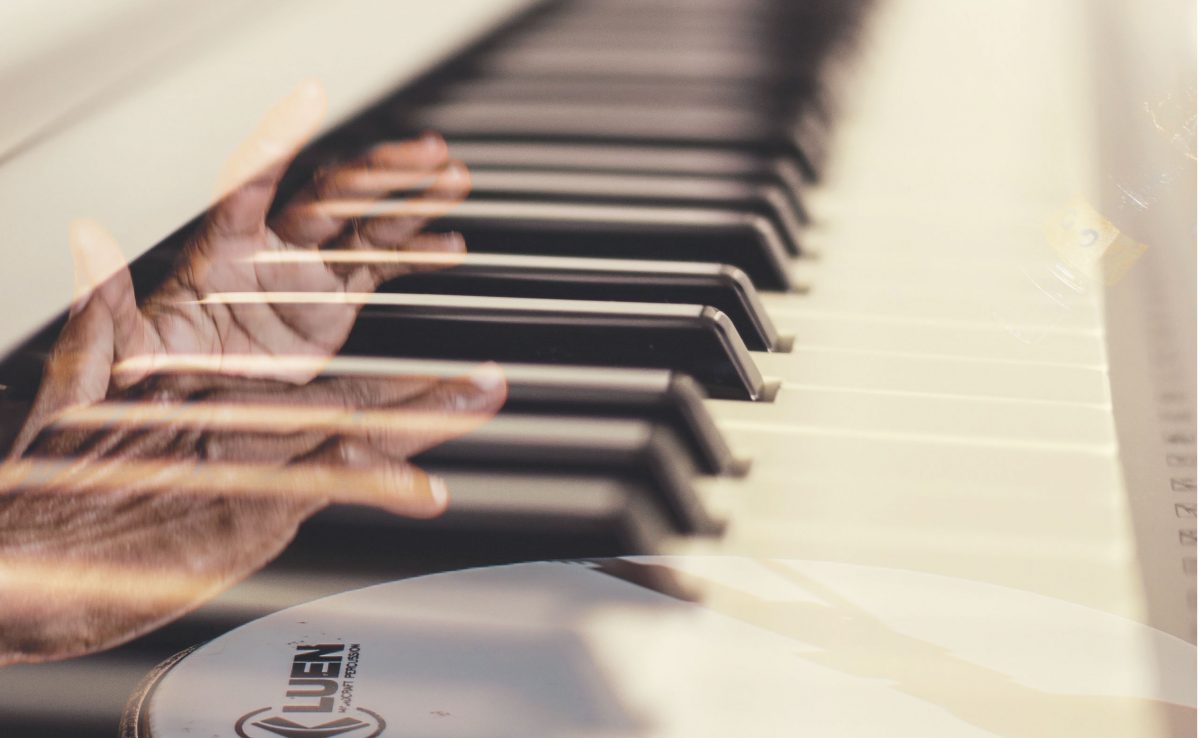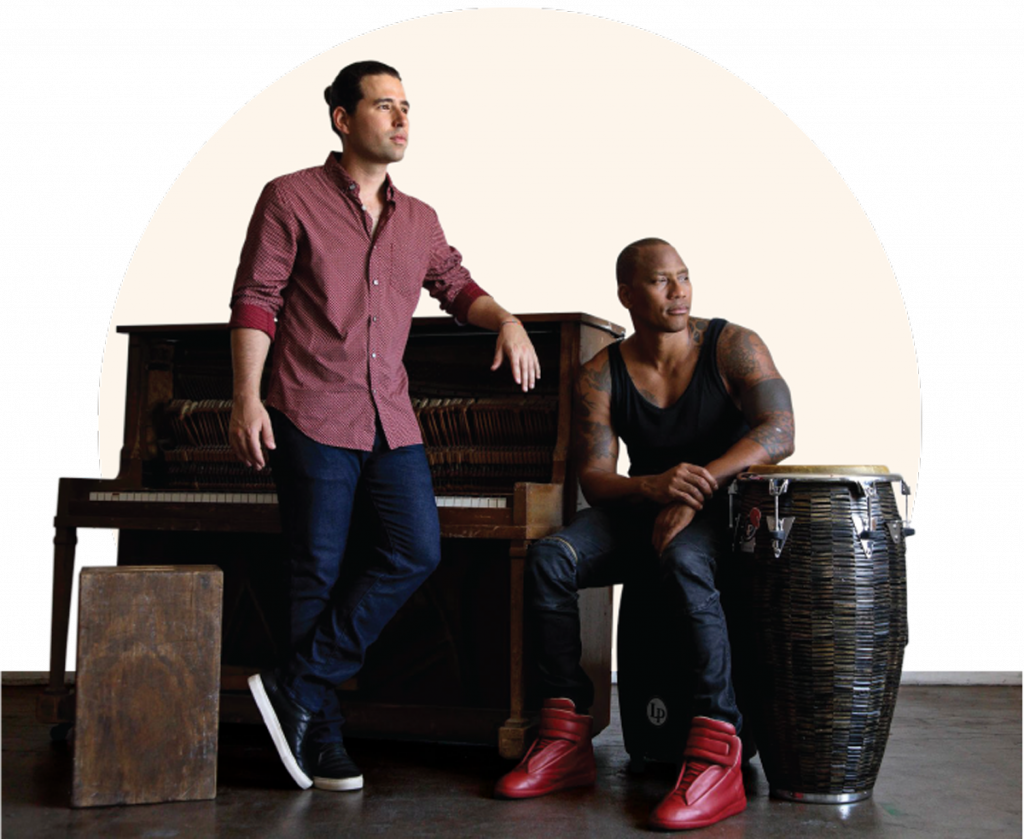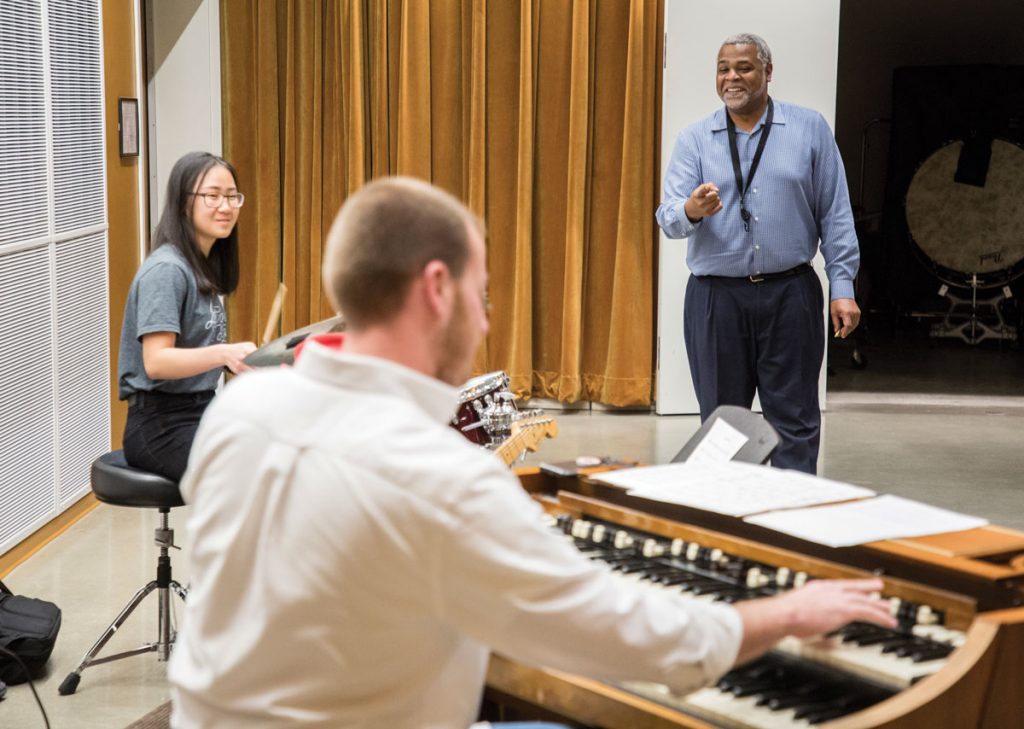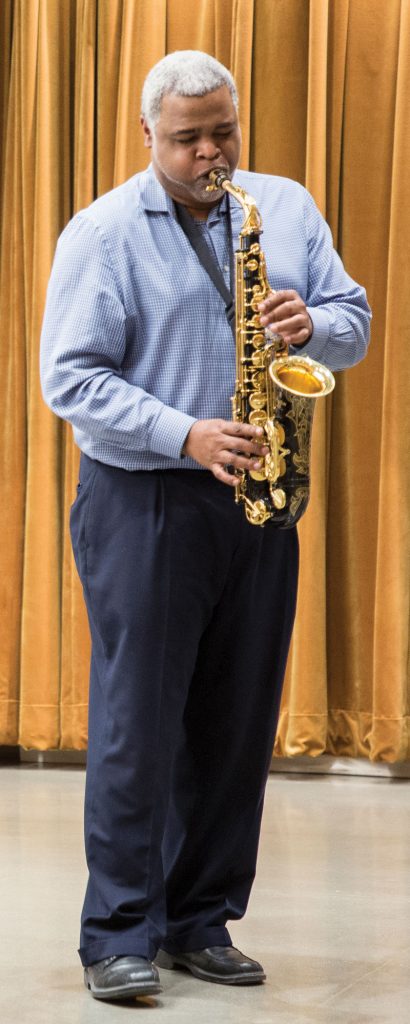More than a Gig
Cuban-born jazz musicians Alfredo Rodriguez and Pedrito Martinez have been nominated for Grammy Awards. Rodriguez, a pianist, is a protégé of legendary producer Quincy Jones. Scintillating percussionist Martinez has played or recorded with artists from Bruce Springsteen to Wynton Marsalis. Together they are touring the world, performing for large, enthusiastic crowds in support of their first duet recording, Duologue.
One recent rainy Friday afternoon in Holland, Michigan, however, Rodriguez and Martinez played to a small, mesmerized, and slightly intimidated audience of about 40 Hope College students inside the Jack H. Miller Center for Musical Arts. And they weren’t just playing: They were communicating.
“We’re going to try and make this as natural as we can,” Rodriguez encouraged the gathering from the stage between songs. “We’re going to talk, and you just feel like you’re at home. If you want to ask any questions, that’s what we’re here for.”
You probably won’t hear such give-and-take at your next concert or recital, but it’s relatively common at Hope, where interaction between students, visiting artists and scholars is not only encouraged, but in many cases expected.
In the arts, such encounters often take the form of master classes, where advanced students perform for and are critiqued by the guest professional. The Rodriguez-Martinez Q-and-A session, held hours before their ticketed concert that evening, was more lecture-demonstration. Both types of events typically involve artists appearing in the Hope College Great Performance Series, the annual concert lineup that has brought internationally renowned acts in music, theatre and dance to the campus and community for more than 50 years.
For 20 of his 30 years at Hope, Derek Emerson ’85 has been organizing events featuring guest artists and serving as Great Performance Series impresario. Is collaboration with students an important factor in booking acts for the series? “Absolutely,” Emerson says. “We build that right into the contracts. A lot of them are used to it. If they come to a college, they know you’re going to want to do something like that with them.”
Emerson says he relies heavily on input from the theatre, music and dance departments in selecting the Great Performance artists. “I’m surprised at the number of colleges that run a performance series completely separate from their students,” he observes. “I think for the bigger universities it becomes kind of a moneymaking thing and a community thing. We’re trying to educate students as well. I mean, that’s what we’re about.”
The artists often are about that, too. Backstage after their demonstration, Martinez and Rodriguez expressed genuine disappointment that none of the students brought their instruments along. “Never leave it!” Rodriguez exclaimed. “We know kids in college can be very shy. We intimidate them. But it’s like going to war without your weapon.”
“That’s true,” Martinez echoed. “This might be their only opportunity to play with a couple of Cuban guys. Maybe they can teach you something you didn’t know. We didn’t have opportunities like this in Cuba.”
“You probably won’t hear give-and-take between the performers and audience at your next concert or recital, but it’s relatively common at Hope, where interaction between students, visiting artists and scholars is not only encouraged, but in many cases expected.”
Hope freshman Houston Patton, saxophonist and music major from Belleville, Michigan, attended the presentation — a man without a horn. “Definitely I would bring it next time,” he says. “They showed me how music was much more than just playing notes, how it can enrich lives. You could see how much joy it brought them, just having fun and being able to share that with us.”
Guest soloists performing with Hope ensembles and guest recitalists also provide opportunities for student interaction, but the Rodriguez-Martinez workshop reminded Emerson of a favorite Great Performance Series memory. “It was in the old music building in Wichers,” he recalls. “Michael Brecker [the late saxophonist-composer] had like 12 Grammys at the time, and he was just going to talk to the students about his life as a musician.
“He’s talking about 20 minutes, and behind him on stage is a jazz setup because they had been practicing. Suddenly he looks at them and says, ‘I’m taking the drums. Who wants to play?’ After the shock wore off, for about 40 minutes our students were doing instrumental solos with Brecker, who was a great drummer, too. It was completely impromptu. I’m sure some of those students still talk to this day about the time they jammed with Michael Brecker.”
Just one encounter with a visiting artist could change the entire course of a student’s life. It did for Assistant Professor of Music Lora Clark ’97 Kolean. A Hope alum and piano major, she was encouraged by now-retired Professor Joan Conway to perform in a master class for the great Italian pianist Fabio Bidini, who was on campus through the Great Performance Series. “That was amazing and I was inspired by that,” Kolean remembers, “but he performed a recital the next night and I was blown away. I was literally vibrating after hearing him play.”
Bidini asked for someone to send him the newspaper review of his performance, and Lora Clark eagerly volunteered. That began a friendship that eventually led to Bidini inviting her for post-graduate study at the Academia Musicale Umbra in Perugia, Italy, where he was teaching. She spent three years there.
“I always really wanted an opportunity to study abroad, but in music you don’t just say, ‘I want to go abroad,’” Kolean explains. “You need to be with a certain teacher, and you go to that teacher’s school. So for me it was ideal.”
The artist-student interplay also can have cultural significance. During Black History Month, Dr. Damani Phillips, director of jazz studies and associate professor of African American studies at the University of Iowa, spent four days at Hope as the Hurtgen Jazz Artist in Residence and presented his multimedia presentation, “Jazz in the Fight for Civil Rights: Jazz as Activist Music.”
Hope Assistant Professor of Music Jordan VanHemert, a fellow saxophonist and associate of Phillips, helped arrange the visit with cooperation from Vanessa Greene, associate dean of students and director of the Center for Diversity and Inclusion. “I consider this to be the most important work I’m doing this year,” VanHemert states. “To be able to bring in Damani for something like this, where he’s interacting with the whole campus community, it’s not just a music thing. It’s not just diversity and inclusion. This is like my love letter to Hope College.”
Freshman Patton got the message. “It was great,” he says of Phillips’ sojourn. “He was already a big inspiration in my life. The way he could command the room was admirable, and his saxophone playing was amazing, beyond comprehension. Hopefully I can keep in touch with him.”
Of course, such visiting scholar affiliations with students take place across Hope’s campus. In the sciences, for example, the Gentile Interdisciplinary Lectureship series brings in distinguished researchers and experts (TV-radio science journalist Ira Flatow came last fall) for a pair of lectures — one for the public, one more technical for faculty and students — and interpersonal dialogue.
“We always try to get our Gentile lecturers to spend time with our students,” says Dr. David Van Wylen, dean for natural and applied sciences, who coordinates the series. “Arranging visits to classes, lunches, even special sessions for selected students. And sometimes it goes beyond the science. One year we brought in a husband-wife team from St. Olaf College who talked about realizing the whole of life through work, home, marriage, church, and so on.
“I’m quite certain these sessions with our Gentile Lecturers have been high-impact events that create lasting memories for our students.”




